Distribution
![]() News
News
![]() Notes & Interesting Articles
Notes & Interesting Articles
![]() Overview
Overview
![]() Pricing
Pricing
![]() Products
Products
Accessories and Options
![]() Filters
Filters
![]()

Baader Planetarium Neodymium Moon & Skyglow Filter Review

Right: Baader Planetarium Neodymium Moon & Skyglow 1.25 and 2 inch filters shown with provided plastic cases.(97,825 bytes).
Click on image for enlarged view (179,869 bytes).
The following is the report of an empirical series of tests conducted by Mr. Tom Licha with the Baader Planetarium Neodymium Moon & Skyglow Filter. The test reinforces the value of this filter for imaging too. Text and illustrations (with exception of the filter transmission curve) are © 2002 by Tom Licha.
Review: Baader Skyglow Filter 2 inch - written on October 26, 2002 - ranked 8.6 out of 10 (5 Votes)
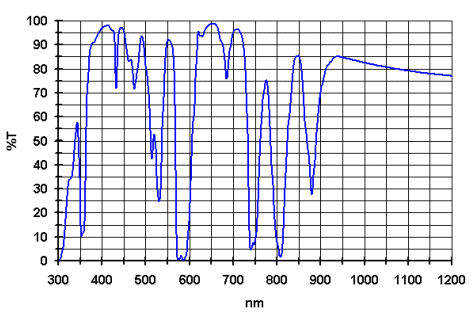 This Baader Skyglow filter is also available in a 1.25 inch version. Baader claims that filter to be a selective contrast filter. The filter shall be polished to high degree of plan parallelism and can hence be used well before the focus without introducing aberration.
This Baader Skyglow filter is also available in a 1.25 inch version. Baader claims that filter to be a selective contrast filter. The filter shall be polished to high degree of plan parallelism and can hence be used well before the focus without introducing aberration.
This filter is excluding the wavelengths of *unwanted* light in the sky while passing most of the *wanted* spectra. Unwanted light in this case is the light coming from sky pollution sources like street lamps and so on. As will be seen later this filter is also helping to supress the light of the nearby moon.
The transmission is in peak about 94% and in most of the wanted spectra well around 90% which can be regarded to be very good. If we take into account the loss at 570nm we can estimate an overall transmission of about 75%. Please note that the filter very well transmits the blue with cutting down near ultra-violett which can be an advantage with some refractors (color aberration). Also note that the filter cuts to the near infra-red which again can be an advantage when using a CCD camera and a refractor. But for special purposes this side effect might be unwanted.
Test conditions
The filter was tested with a Takahashi FS-60C refractor and a HX916 Starlight XPress CCD camera. Because of the very small pixels of 6.7 mym the HX916 it shows smallest aberrations in the optical train. Compare this pixel size to an average spot diagramm of a refractor showing spot sizes of several hundreth of millimeters in many cases! The filter was inserted about 55 mm before the focus. So there is enough space to include a filter whell or other equipment.
The test images were taken in the early morning with a 67% moon present. The transparency was fair but the big halo arround the moon indicated some fog in the sky. Before we look at the details in the test image have a look at two LRGB color pictures I accuired with the filter at that night.
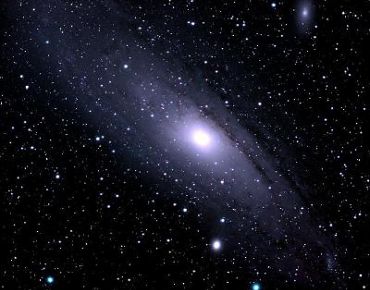
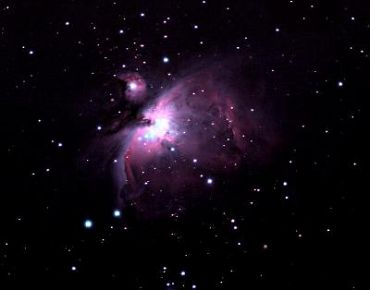
Test photos
The detailed test was performed on Andromeda galaxy. The HX916 is close to saturation within 35 seconds of exposure without the filter. With the filter included it needs 45 seconds for the same exposure level. That gives an overall transmission of 78% for that galaxy. Or in other words the exposure time has to be 22% longer. To minimize the effect of photon noise, read-out noise and thermal noise all examples below are an average of 9 frames. No filtering was applied.
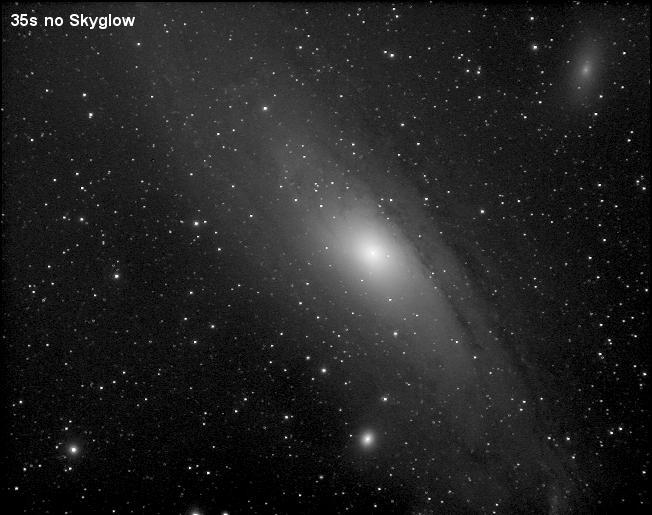

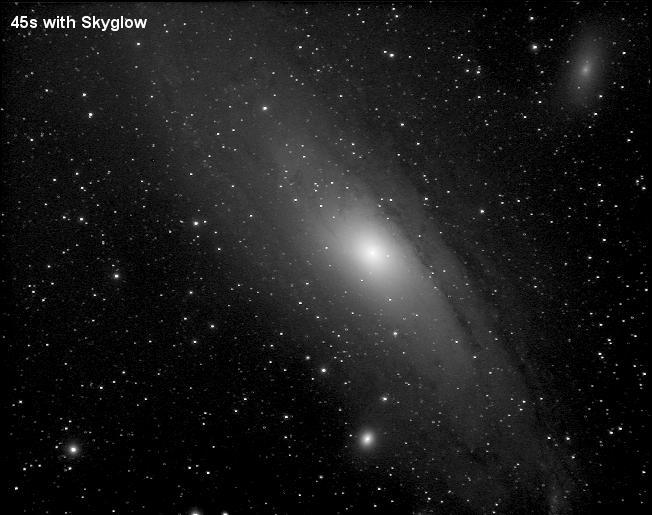

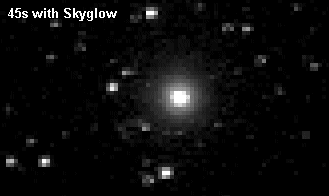
To check whats happening in detail I made a 4x zoom of each image. Please have a closer look to the lower left corner of all three images from above:
The first two images are both at 35 seconds. They have comparable noise but the halo arround the bright star seems to be reduced with filter. With the Skyglow filter there are slightly more stars. This should be from the reduced sky backround level giving more contrast. If you compensate for the loss of light with the Skyglow filter you can expose 45 seconds.
And then the filter can do its best. The faint stars clearly show against the sky background and the halo arround the brightest star is dramatically decreased.
Conclusion
The Baader Skyglowfilter is doing it's job very fine. If you are prepared to expose about 20% longer you can improve your picture quality considerably under less than optimal conditions. Taking into account the low price it is highly recommend.
More images, taken with the Baader Skyglowfilter you'll find on my private Website
Tom Licha, October 26, 2002

